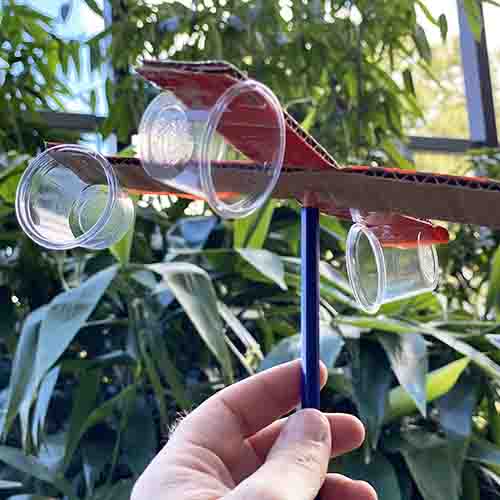All You Required to Find Out About Anemometers: How They Function, Why They Matter, and Where to Utilize Them
Anemometers, though usually overlooked in the world of scientific tools, play an essential function in various areas, providing important insights right into wind speed and air flow patterns. Understanding the mechanics behind these tools is vital for anyone looking for to harness the power of this data. From meteorologists tracking weather patterns to engineers developing structures with wind tons in mind, the applications of anemometers are diverse and significant. As we look into the details of anemometer modern technology, we will certainly reveal the inner functions of these devices, their relevance, and the key considerations when picking the best anemometer for particular applications.

Anemometer Basics
A vital instrument used to measure wind rate and instructions, the anemometer plays a vital duty in weather forecasting and different industries. An anemometer generally consists of three or 4 cups that rotate in the wind, a vane that directs right into the wind, and sensing units to track the rotations or motions. By determining the rotations or motions over a details time duration, the anemometer can determine wind speed. The vane assists establish wind instructions by aiming into the wind, offering valuable data for climate projecting, aviation, maritime procedures, environmental monitoring, and wind power applications.
There are different kinds of anemometers readily available, including mug anemometers, vane anemometers, hot-wire anemometers, and sonic anemometers, each with its special features and applications. Mug anemometers are frequently used for fundamental wind rate dimensions, while vane anemometers are preferred for directional dimensions. Hot-wire anemometers appropriate for reduced airspeeds, and sonic anemometers are perfect for high-precision dimensions in research and industrial setups. Understanding the basics of anemometers is essential for precise wind information collection and evaluation across different fields.
Concepts of Anemometer Operation
Structure on the fundamental understanding of anemometer fundamentals, the principles of anemometer procedure clarify the auto mechanics behind wind speed and direction measurements. Mug anemometers, for circumstances, have three or even more mugs that catch the wind, triggering them to spin much faster as the wind speed rises. Hot-wire anemometers depend on a heated cord that cools down as wind passes over it, with the rate of cooling down figuring out the wind speed.
Significance of Anemometers
Anemometers play a vital function in determining wind rate and instructions, supplying necessary information for climate projecting, environment researches, environmental monitoring, and air travel operations. Meteorologists count on anemometers to gather precise wind information, helping them comprehend weather condition patterns, anticipate storms, and issue prompt cautions to the public. Wind farm operators use anemometers to analyze wind problems and maximize electrical energy production from wind turbines.
Applications Across Different Industries
Applications of anemometers cover throughout varied industries, showcasing their convenience and utility past meteorology. In the renewable energy sector, anemometers play an essential function in analyzing wind conditions for wind ranch placements, ensuring ideal energy production. Industries like construction and mining use click to find out more anemometers to keep track of wind rates, essential for safety and security procedures, especially when functioning at elevations or in open-pit mines where strong winds can posture risks. Anemometers are additionally essential in the aeronautics market, assisting pilots in comprehending airspeed and wind instructions for safe liftoffs and landings. The maritime market take advantage of anemometers for ship navigating, assisting sailors prepare for weather adjustments and adjust paths as necessary. In agriculture, anemometers aid farmers in taking care of crop splashing by providing real-time data on wind speed to stay clear of drift. Anemometers locate applications in HVAC systems to optimize go to this website air flow and improve power performance in structures. The varied usage instances of anemometers underscore their importance throughout different industries, highlighting their vital function in enhancing operational safety and security and efficiency (anemometer).

Picking the Right Anemometer for Your Needs
For general functions, a mug anemometer is appropriate for measuring wind rate, while a vane anemometer supplies wind instructions data. Hot-wire anemometers are suitable for low airspeed dimensions, and ultrasonic anemometers supply high precision and longevity.

Final Thought
In verdict, anemometers play a crucial function in gauging wind rate and direction throughout various industries. It is essential to think about the relevance of anemometers in order to make informed decisions when selecting the most ideal tool for determining wind problems.
There are numerous types of anemometers offered, including mug anemometers, vane anemometers, hot-wire anemometers, and sonic anemometers, each with its distinct functions and applications. Mug anemometers are generally used for fundamental wind rate dimensions, while vane anemometers are preferred for directional measurements. Hot-wire anemometers are appropriate for low airspeeds, and sonic anemometers are perfect for high-precision measurements in research study and commercial setups.Building on the foundational understanding of anemometer fundamentals, the principles of anemometer operation illuminate the auto mechanics behind wind rate and instructions dimensions. redirected here For basic objectives, a cup anemometer is appropriate for gauging wind speed, while a vane anemometer offers wind direction information.